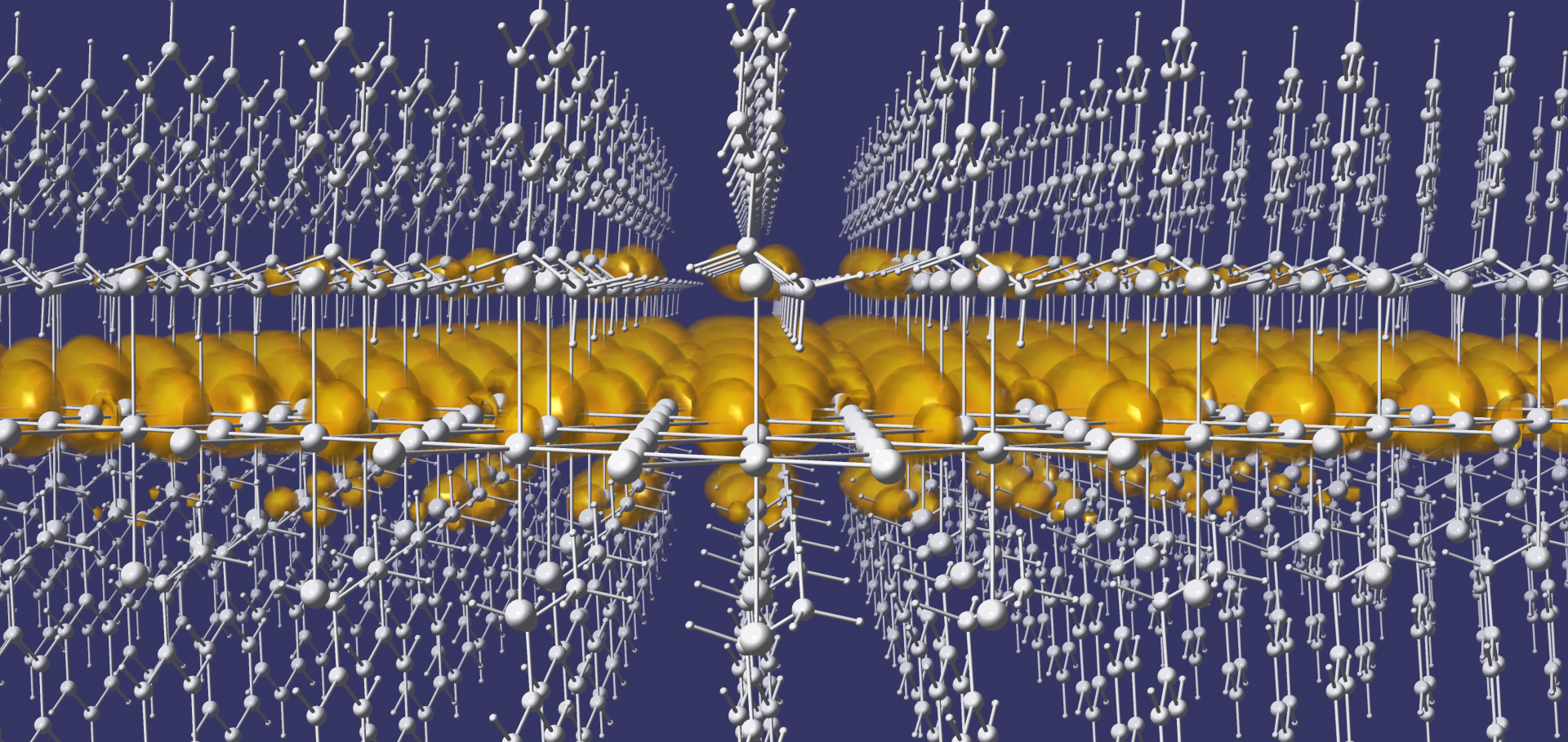Addition to “Tuning the Quantum-Well Structure of Single-Crystal Layered Perovskite Heterostructures”
Journal of the American Chemical Society American Chemical Society (ACS) 147:49 (2025) 45840-45840
Tailoring a Lead-Free Organic–Inorganic Halobismuthate for Large Piezoelectric Effect
Journal of the American Chemical Society (2025)
Abstract:
Molecular piezoelectrics are a potentially disruptive technology, enabling a new generation of self-powered electronics that are flexible, high performing, and inherently low in toxicity. Although significant efforts have been made toward understanding their structural design by targeted manipulation of phase transition behavior, the resulting achievable piezoresponse has remained limited. In this work, we use a low-symmetry, zero-dimensional (0D) inorganic framework alongside a carefully selected 'quasi-spherical' organic cation to manipulate organic-inorganic interactions and thus form the hybrid, piezoelectric material [(CH3)3NCH2I]3Bi2I9. Using variable-temperature single crystal X-ray diffraction and solid-state nuclear magnetic resonance spectroscopy, we demonstrate that this material simultaneously exhibits an order-disorder and displacive symmetry-breaking phase transition. This phase transition is mediated by halogen bonding between the organic and inorganic frameworks and results in a large piezoelectric response, d33 = 161.5 pm/V. This value represents a 4-fold improvement on previously reported halobismuthate piezoelectrics and is comparable to those of commercial inorganic piezoelectrics, thus offering a new pathway toward low-cost, low-toxicity mechanical energy harvesting and actuating devices.Tuning the Quantum-Well Structure of Single-Crystal Layered Perovskite Heterostructures
Journal of the American Chemical Society American Chemical Society (ACS) 147:44 (2025) 40171-40181
Abstract:
Single-crystal layered perovskite heterostructures provide a scalable platform for potentially realizing emergent properties recently seen in mechanically stacked monolayers. We report two new layered perovskite heterostructures M<sub>2</sub>(PbCl<sub>2</sub>)(AMCHC)<sub>2</sub>(PbCl<sub>4</sub>)·2H<sub>2</sub>O (<b>1_M</b> where M = Na<sup>+</sup>, Li<sup>+</sup>; AMCHC = <sup>+</sup>NH<sub>3</sub>CH<sub>2</sub>C<sub>6</sub>H<sub>10</sub>COO<sup>-</sup>) crystallizing in the chiral, polar space group <i>C</i>2. The heterostructures exhibit alternating layers of a lead-chloride perovskite and an intergrowth comprising corner-sharing PbCl<sub>4</sub>(η<sup>2</sup>-COO)<sub>2</sub> polyhedra with bridging equatorial chlorides and terminal axial oxygen ligands. Small alkali metal cations and water molecules occupy the cavities between the polyhedra in the intergrowth layer. The heterostructures display wide bandgaps, two closely spaced excitonic features in their optical spectra, and strong second harmonic generation. The calculated band structure of <b>1_Na</b> features a Type-I quantum-well structure, where the electron-hole correlation function corresponding to the lowest excited state points to electron-hole pairs localized within a single inorganic layer (intralayer excitons), as seen in typical layered halide perovskites. In contrast, calculations show that <b>1_Li</b> adopts a Type-II quantum-well structure, with electrons and holes in the lowest excited state residing in different inorganic layers (interlayer excitons). Calculations on model complexes suggest that these changes in band alignment, between Type-I and Type-II quantum-well structures, are driven by the placement of the alkali metal and the orientation of the water molecules, changing the electrostatic potential-energy profiles of the heterostructures. Thus, this study sets the stage for accessing different alignments of the perovskite and intergrowth bands in bulk perovskite heterostructures that self-assemble in solution.Ruddlesden–Popper Defects Act as a Free Surface: Role in Formation and Photophysical Properties of CsPbI 3
Advanced Materials Wiley (2025) 2501788
Abstract:
The perovskite semiconductor, CsPbI3, holds excellent promise for solar cell applications due to its suitable bandgap. However, achieving phase‐stable CsPbI3 solar cells with high power conversion efficiency remains a major challenge. Ruddlesden–Popper (RP) defects have been identified in a range of perovskite semiconductors, including CsPbI3. However, there is limited understanding as to why they form or their impact on stability and photophysical properties. Here, the prevalence of RP defects is increased with increased Cs‐excess in vapor‐deposited CsPbI3 thin films while superior structural stability but inferior photophysical properties are observed. Significantly, using electron microscopy, it is found that the atomic positions at the planar defect are comparable to those of a free surface, revealing their role in phase stabilization. Density functional theory (DFT) calculations reveal the RP planes are electronically benign, however, antisites observed at RP turning points are likely to be malign. Therefore it is proposed that increasing RP planes while reducing RP turning points offers a breakthrough for improving both phase stability and photophysical performance. The formation mechanism revealed here can apply more generally to RP structures in other perovskite systems.Ultrafast Spontaneous Exciton Dissociation via Phonon Emission in BiVO$_4$
(2025)


